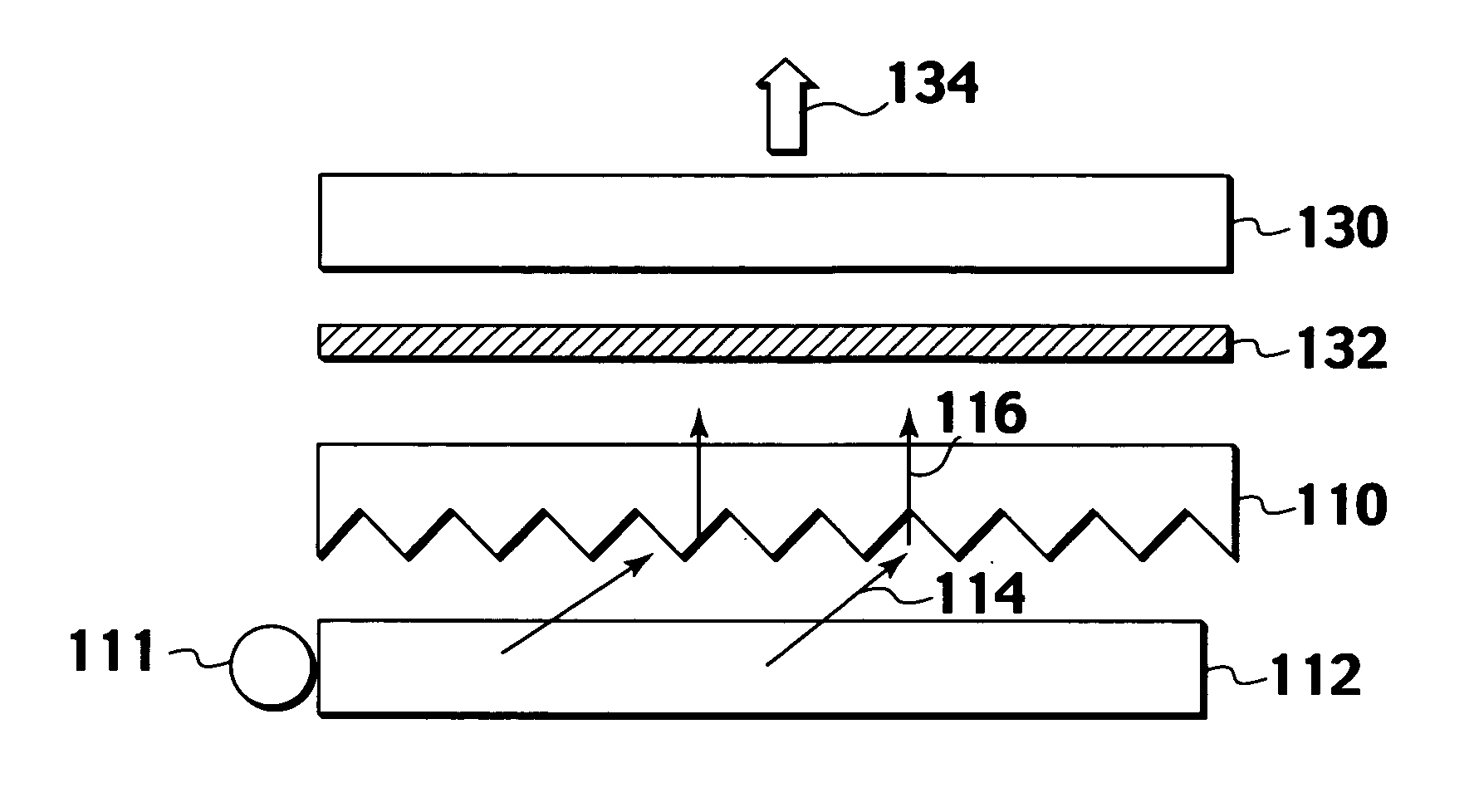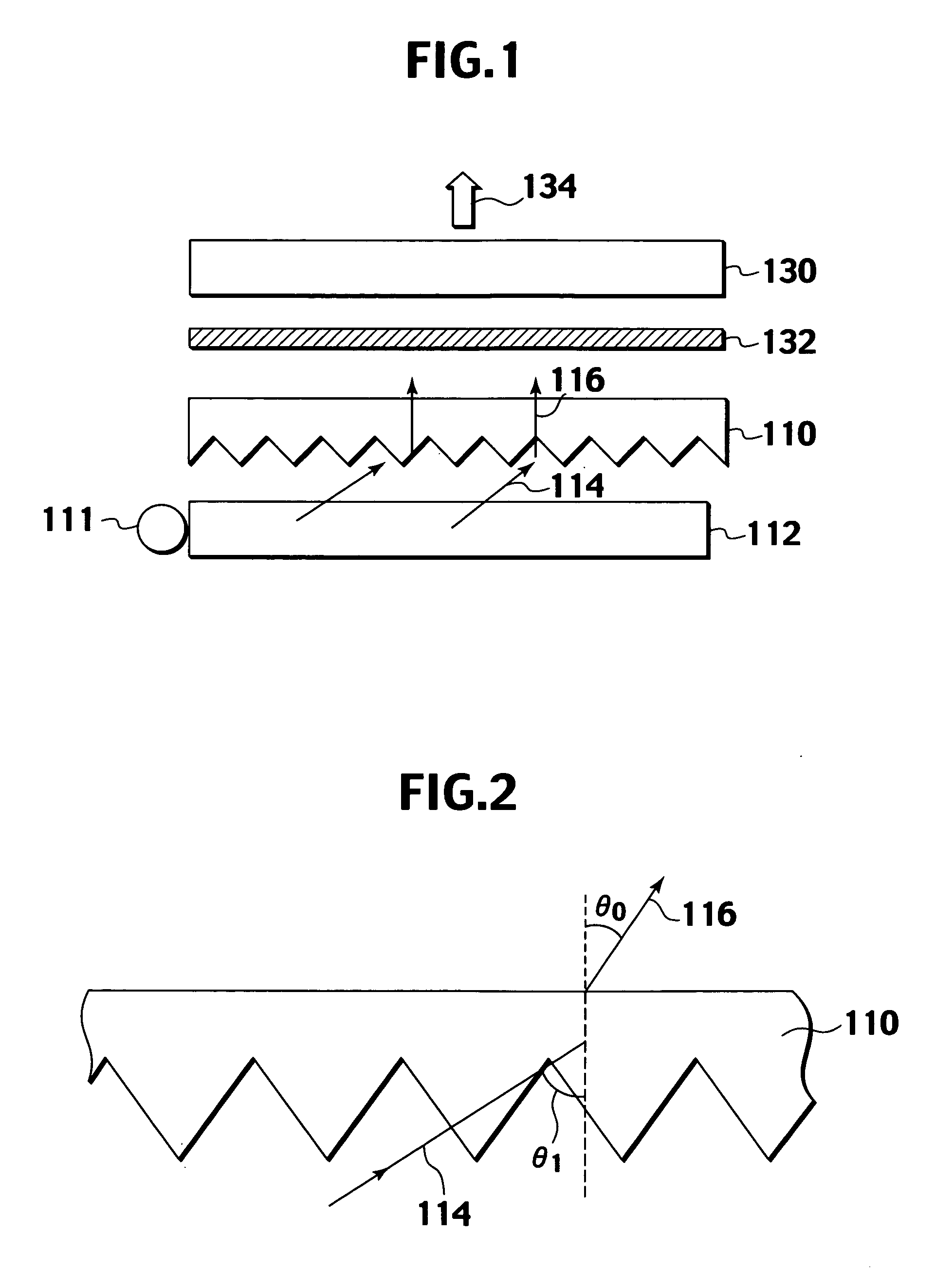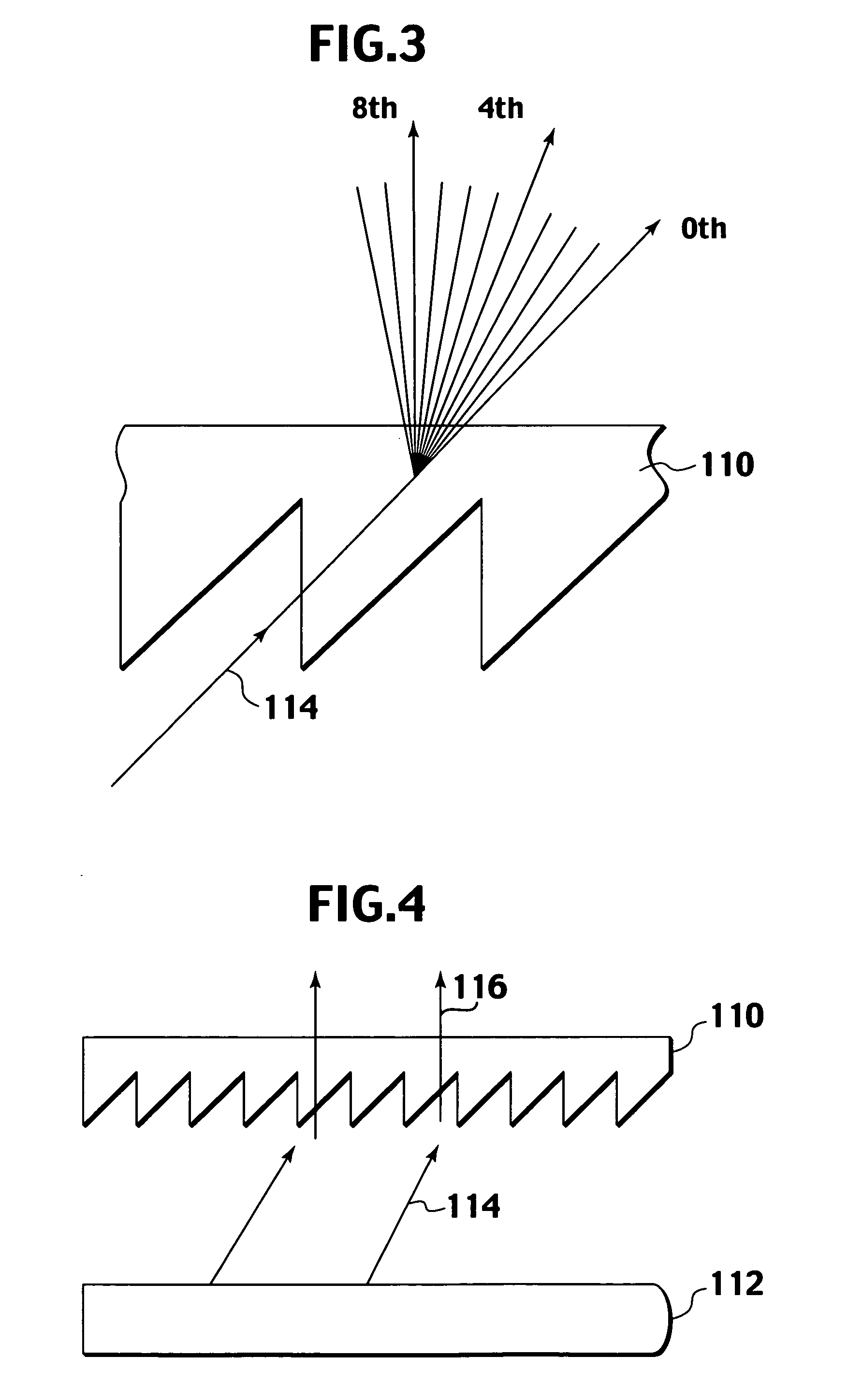Optical film and surface light source using it
a surface light source and optical film technology, applied in the field of optical film, can solve the problems of holograms being considered improper for bending white light, unable to control the diffusion angle range of microscopic beads or rods, and deteriorating front brightness, so as to achieve uniform light diffusion, reduce brightness, and secure high brightness
- Summary
- Abstract
- Description
- Claims
- Application Information
AI Technical Summary
Benefits of technology
Problems solved by technology
Method used
Image
Examples
embodiments
[0094] Embodiments of the present invention will be explained with reference to the drawings. These embodiments are not intended to limit the present invention.
[0095]FIG. 11 is a view showing a configuration of an optical film according to an embodiment of the present invention.
[0096] The optical film 10 has a transparent base film 11. One face of the base film 11 is an incident surface 12 on which a predetermined shape is formed. The other face of the base film 11 is an exit surface 13 on which a hologram is formed.
[0097] The base film 11 is made of, for example, polyethylene terephthalate (PET). The predetermined shape on the incident surface 12 and the hologram on the exit surface 13 are formed from photo-curable resin.
[0098] The base film 11 bends incident white light through the predetermined shape formed on the incident surface 12 and perpendicularly emits the light from the exit surface 13. The hologram formed on the exit surface 13 serves as a diffuser to diffuse the lig...
PUM
 Login to View More
Login to View More Abstract
Description
Claims
Application Information
 Login to View More
Login to View More - R&D
- Intellectual Property
- Life Sciences
- Materials
- Tech Scout
- Unparalleled Data Quality
- Higher Quality Content
- 60% Fewer Hallucinations
Browse by: Latest US Patents, China's latest patents, Technical Efficacy Thesaurus, Application Domain, Technology Topic, Popular Technical Reports.
© 2025 PatSnap. All rights reserved.Legal|Privacy policy|Modern Slavery Act Transparency Statement|Sitemap|About US| Contact US: help@patsnap.com



